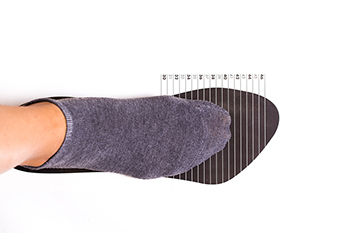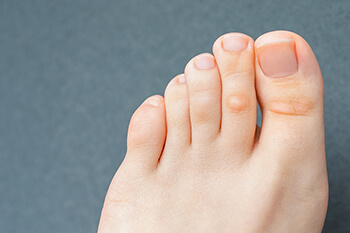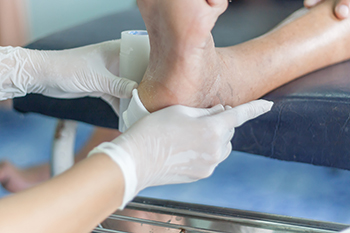Many rheumatoid arthritis sufferers find that ingrown toenails have become an ongoing problem. An ingrown toenail occurs when the outer edge of the nail gets embedded in the surrounding skin. This can cause pain, swelling, and possibly an infection. If this happens regularly, surgery to remove the nail may be an option to consider. If you still have a good blood supply to the feet and toes, and if you are not currently having a rheumatoid flare-up, removal of the toenail is a viable option. Surgery, which can be carried out by a podiatrist, is a long-term solution. But it’s important to remember that because of rheumatoid arthritis the healing process may be slow. Other options can include changing your footwear to a larger size and seeing a podiatrist to set up a series of regular foot-care appointments as a preventative measure.
Ingrown toenails may initially present themselves as a minor discomfort, but they may progress into an infection in the skin without proper treatment. For more information about ingrown toenails, contact the podiatrists of Boston Common Podiatry. Our doctors can provide the care you need to keep you pain-free and on your feet.
Ingrown Toenails
Ingrown toenails are caused when the corner or side of a toenail grows into the soft flesh surrounding it. They often result in redness, swelling, pain, and in some cases, infection. This condition typically affects the big toe and may recur if it is not treated properly.
Causes
- Improper toenail trimming
- Genetics
- Improper shoe fitting
- Injury from pedicures or nail picking
- Abnormal gait
- Poor hygiene
You are more likely to develop an ingrown toenail if you are obese, have diabetes, arthritis, or have any fungal infection in your nails. Additionally, people who have foot or toe deformities are at a higher risk of developing an ingrown toenail.
Symptoms
Some symptoms of ingrown toenails are redness, swelling, and pain. In rare cases, there may be a yellowish drainage coming from the nail.
Treatment
Ignoring an ingrown toenail can have serious complications. Infections of the nail border can progress to a deeper soft-tissue infection, which can then turn into a bone infection. You should always speak with your podiatrist if you suspect you have an ingrown toenail, especially if you have diabetes or poor circulation.
If you have any questions, please feel free to contact our office located in Boston, MA . We offer the newest diagnostic and treatment technologies for all your foot care needs.











